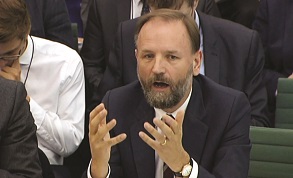News / NHS ups efficiency stakes with mandatory plan
The NHS in England has been handed a mandatory 10-point efficiency plan, while emerging accountable care systems (ACS) have been offered the prospect of a one-stop shop regulatory regime with NHS England and NHS Improvement.

The plans were set out in the NHS forward view delivery plan, Next steps on the NHS five-year forward view, published at the end of March. As well as the streamlined regulatory regime, an ACS could receive a devolved transformation funding package in 2018, potentially including national funding for the GP forward view, mental health and cancer services. It listed nine potential candidates to become an ACS.
The document sets out goals for the next two years, recognising there must be trade-offs to maintain financial balance. The national service priorities for 2017/18 are on A&E performance (see page 5), better access to GP services and improving cancer and mental health services. However, the plan accepts that ‘some providers’ waiting times will grow’.
Sustainability and transformation plans (STPs) are being updated to reflect national priorities, but the plan said significant risks to delivery remain – on bed occupancy reductions required, workforce supply, capital requirements and residual financial gaps. An STP update that will include final agreed control totals and plans for 2017/18 will be published in the first quarter.
The plan highlighted three NHS truths:
- It is one of the most efficient healthcare systems in the industrialised world
- Health spending is likely to rise significantly over the coming decades because of growing demographic pressures, rising demand and technology advances
- However, substantial opportunities to cut waste and increase efficiency remained.
To deliver these savings, the plan set out a 10-point list of mandatory actions (see box) that aims to save £1bn in 2017/18, with further savings in running costs and reimbursement for the care of overseas patients. NHS England and NHS Improvement will oversee their delivery.
In 2017/18 they include a £100m cut in back-office costs through consolidation; £350m in procurement savings; almost £380m through medicines efficiencies; £130m in diagnostics; and £100m in estates.
NHS England chief executive Simon Stevens(above right) acknowledged the pressure on the service, but said the plan set out practical steps to improve care. While it outlined significant progress, including cutting waste, particularly in agency staffing bills, he added: ‘It also, however, frankly sets out where progress has not been as quick, with rising pressure on A&E and acute wards partly caused by delayed transfers of care.’
The document highlighted improved financial grip, including commissioners contributing a planned £800m underspend in 2016/17 to balance overspends in other parts of the NHS.
NHS England chief financial officer Paul Baumann said CCG forecasts increasingly showed the impact of savings required. At month 11, commissioners forecast a year-end underspend of £0.5m, but CCGs predicted ending the year with a £550m overspend – at month nine the forecast was £370m.
This will be offset by underspends in direct commissioning and NHS England expenditure. While 79 CCGs were forecasting a year-end overspend, 37 were unplanned.
The 10-point efficiency plan
- Hospitals, local authorities and primary and community services must cut delayed transfers of care and free up 2,000-3,000 beds
- There will be a further clampdown on agency costs, with an emphasis on cutting locum doctor spending. While making cuts in temporary and agency staffing as a whole, £150m should come from reductions in locum bills.
- Better trust procurement will release £350m of savings in 2017/18 on a baseline spend of more than £8bn. All trusts must participate in the nationally contracted products programme and use the price comparison tool to get best value.
- The NHS must improve efficiency in community medicines, saving at least £128m on medicines and products of low clinical value and helping hospitals save £250m in 2017/18 by implementing the top 10 medicines savings options.
- The service must reduce avoidable demand through schemes such as RightCare.
- It must use the Getting it right first time methodology to drive quality and productivity improvements and, subject to local consultations, the centre will support well-designed and affordable STP proposals to split emergency and elective care delivery.
- In 2017/18 the NHS must save up to £130m a year in diagnostics through improved deployment of pathologists and imaging, and £100m in estates, by reducing variation in energy costs, for instance.
- It must cut provider back-office costs by £100m in 2017/18 via consolidation across STP areas, where appropriate, and a further £150m in NHS England and CCG running costs by 2019/20. NHS England and NHS Improvement will streamline management of their joint work in 2017/18.
- Improve cost recovery from non-UK residents – the target is £500m a year.
- Each trust and CCG must live within their financial means, and it is no longer acceptable that overspending in some organisations or areas has an impact on other areas or services. This could mean scaling back locally unaffordable services.
Related content
We are excited to bring you a fun packed Eastern Branch Conference in 2025 over three days.
This event is for those that will benefit from an overview of costing in the NHS or those new to costing and will cover why we cost and the processes.